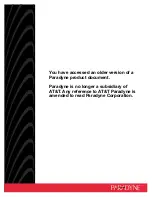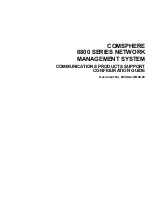
Chapter 2
Hardware and Software Installation
©
National Instruments Corporation
2-5
NI CardBus-8310-to-PXI Expansion User Manual
3.
For each cable, Receive (RX) on one card attaches to Transmit (TX)
on the other card. Attach one CAT5-e cable to the Receive (RX) port
on the NI CardBus-8310 card. Attach the other end to the
Transmit (TX) terminal on the NI PXI-8310 card. Attach one CAT5-e
cable to the Transmit (TX) port on the NI CardBus-8310 card, then
attach the other end to the Receive (RX) port on the NI PXI-8310 card.
The LEDs on the NI PXI-8310 will light up if the cables are connected
properly.
If the LED lights flash continuously, reboot the laptop.
Install the NI CardBus-8310
This step can only be completed after the NI CardBus-8310 software has
been installed.
Note
CardBus cards can only be used in systems that support CardBus. A special keying
mechanism prevents insertion into systems that do not support 32-bit CardBus cards.
1.
Power down your laptop computer. Use the procedures for shutting
down your operating system and shutting off power to your system that
have been provided in your owner’s manual or host computer
documentation.
2.
Insert the NI CardBus-8310 with the NI logo side up (gold strip up)
into the host computer CardBus slot. Gently push the card until it is
seated firmly.
3.
For more information on using CardBus cards, refer to your host
computer’s user manual.
Powering Up
Apply power to the PXI chassis first, and then power up your host
computer. This will allow the higher-numbered buses in your hierarchy to
stabilize before the host computer issues its master power-on bus reset. In
systems that perform automatic bus configuration, this will allow the
configuration code to recognize the bus hierarchy and the attached devices.
Note
The driver allows you to hot-plug your CardBus-8310 card into the CardBus slot on
your laptop, but you should never hot-plug a PXI card into a PXI chassis as it will cause
physical damage to the board, and possibly the backplane.
















































